The flag of Kiribati is a vivid emblem that encapsulates the nation’s distinctive character and connection to the vast Pacific Ocean. This symbol is a testament to the island’s rich environmental and cultural tapestry, eloquently conveying its story to the world.
Flag of Kiribati
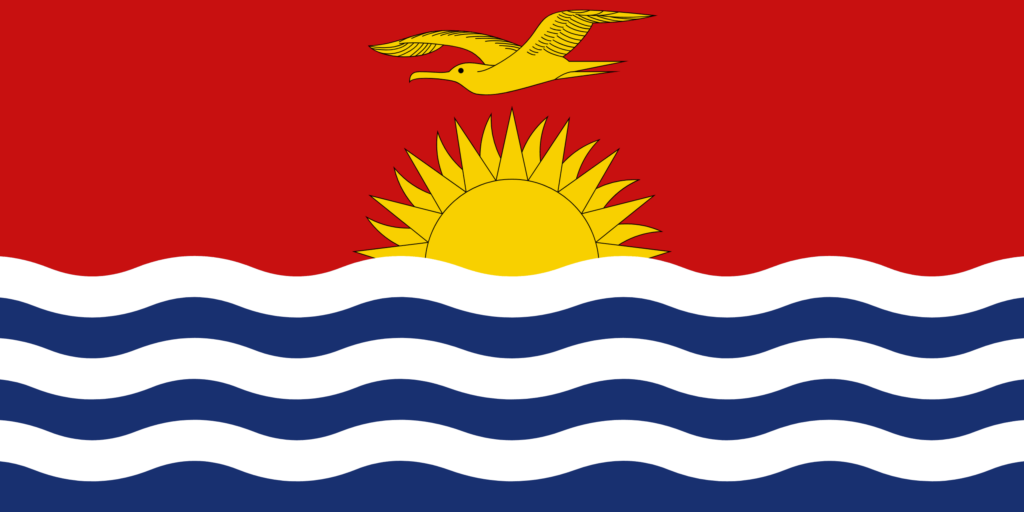
The flag of Kiribati presents a distinctive design, symbolizing the nation’s unique connection to its environment and future. It is divided into two halves by three white, wavy lines that evoke the ocean’s waves. Central to the flag is an image of the sun rising on the horizon, symbolizing new beginnings and hope.
Above the sun, a frigatebird in flight embodies freedom and Kiribati’s skillful navigation through the challenges of the modern era. With its carefully chosen symbols, this flag encapsulates Kiribati’s essence, depicting its natural setting and forward-looking perspective.
Flag of Kiribati: Color Palette
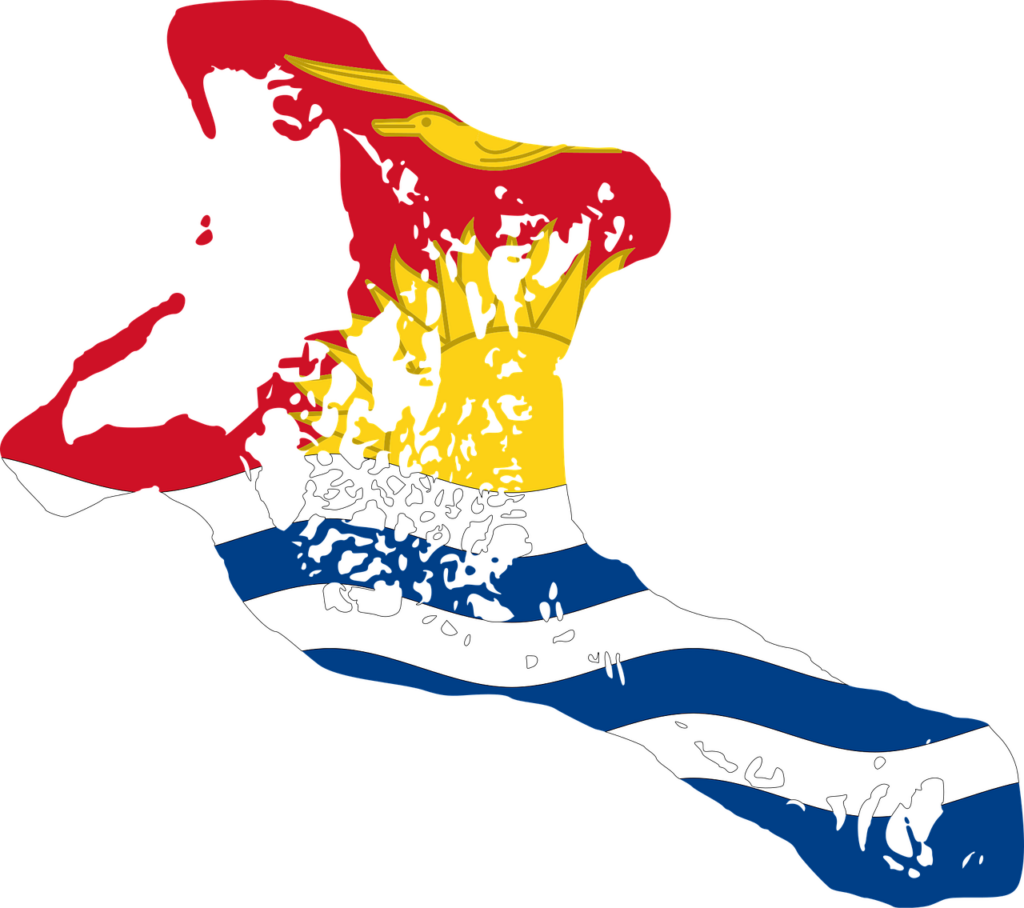
Kiribati Flag Emoji: 🇰🇮
The color palette of Kiribati’s flag is striking and meaningful, consisting of a harmonious blend of red, blue, gold, and white. Each color in this palette is carefully selected to represent significant elements of Kiribati’s natural environment and cultural ethos.
Meaning of Each Color
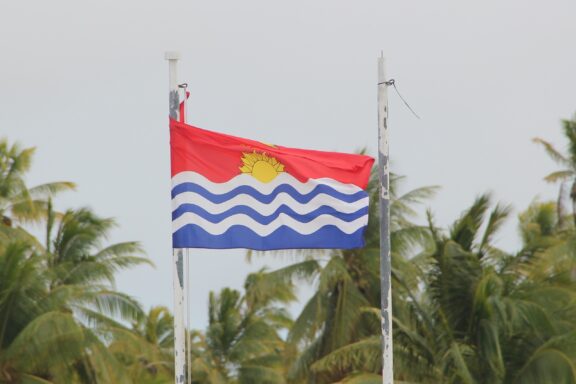
Red
The red portion in the upper half of the Kiribati flag represents the Gilbert Islands (including Banaba) and indicates the equatorial sun, reflecting the country’s geographical position astride the Equator.
The sun, a central figure in the flag, also symbolizes the warmth and vibrant energy of the Kiribati people and their environment.
Gold
The gold color, depicted through the rising sun and the frigatebird, holds deep significance. With its seventeen rays, the sun symbolizes the dawn of a new day and the promise of a bright future. It represents the 16 Gilbert Islands and Banaba.
The gold frigatebird, soaring above the sun, symbolizes freedom and command over the sea, emphasizing the nation’s strong connection to the ocean and its cultural heritage, including traditional dance patterns.
Blue
The lower half of the flag, colored in blue, represents the vast Pacific Ocean surrounding the Kiribati islands. This color choice reflects the nation’s geographical setting and underscores the importance of the ocean in the daily life and history of Kiribati.
The ocean is a source of sustenance, a connection between the islands, and a critical part of the nation.
White
The white wavy stripes in the blue field symbolize the waves of the ocean. This imagery brings to the forefront Kiribati’s relationship with the sea, highlighting not just the physical presence of the ocean but also its influence on the nation’s way of life, from navigation and fishing to cultural practices.
Kiribati’s Coat of Arms
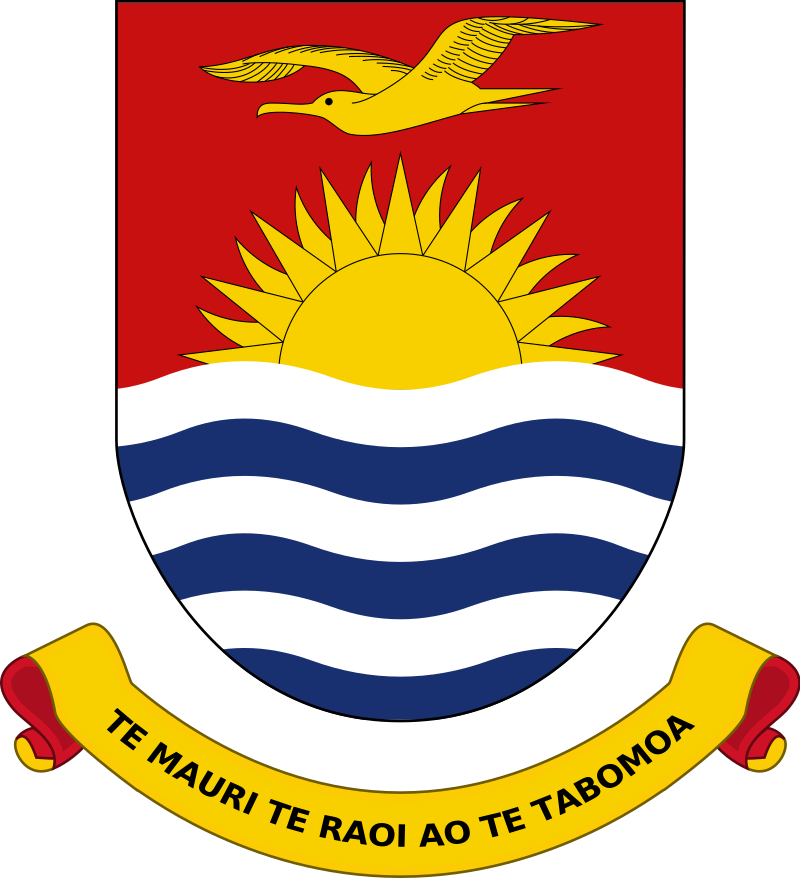
While distinct from the national flag, the Coat of Arms of Kiribati bears symbols that reflect the country’s culture and identity. The central elements of the coat of arms include:
- A Frigatebird: Echoing the symbol on the national flag, the frigatebird in the coat of arms represents power and freedom. It is a significant bird in the culture of Kiribati, symbolizing a connection to the sea and the skies.
- A Rising Sun: The sun motif is also present in the coat of arms, akin to the flag, symbolizing the dawn of a new era and the country’s equatorial position.
- Ocean Waves: The representation of the ocean, often through waves or blue color, is a common theme in Kiribati’s symbols, highlighting the integral role of the Pacific Ocean.
- Local Motifs and Symbolism: The coat of arms may incorporate other local symbols and motifs that resonate with Kiribati’s cultural and historical narrative.
The coat of arms serves as a heraldic representation of Kiribati’s sovereignty, unique culture, and environmental context.
The visual narrative intertwines the nation’s relationship with the sea, the sun’s significance, and the frigatebird’s cultural importance, collectively portraying Kiribati’s distinct identity.
Historical Evolution and the Meaning Behind Changes
The flag of Kiribati, adopted on July 12, 1979, represents the nation’s transition from colonial rule to independence. Its design, rooted in local aspirations and culture, emerged from a national contest, reflecting a shift towards self-representation and sovereignty.
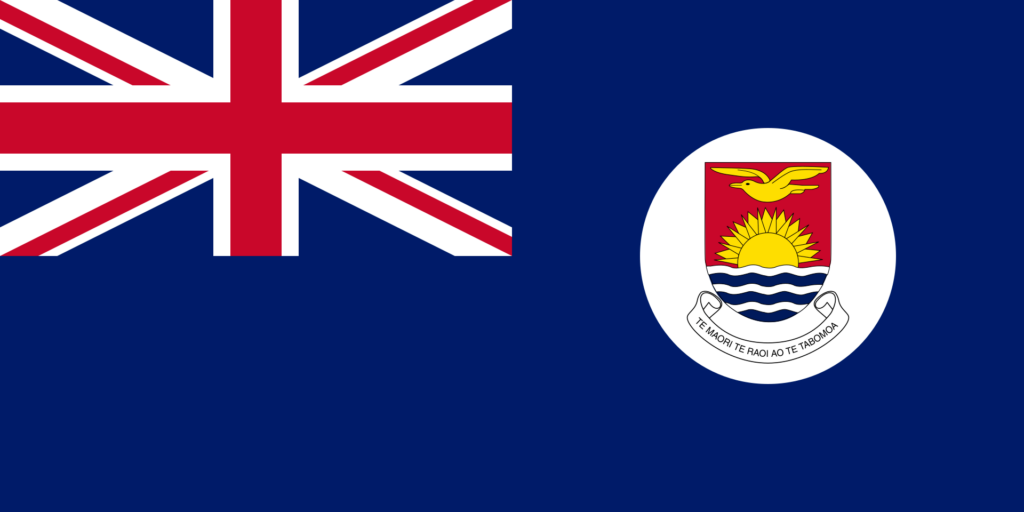
The initial design, influenced by a badge created by Sir Arthur Grimble from the colonial era, was modified by the College of Arms in London but was later reverted to its original form after local insistence.
This decision underscored the importance of a design resonating with Kiribati’s people, emphasizing indigenous symbols over colonial influences.
The flag’s evolution signifies Kiribati’s journey from a protectorate under the British to an independent state, illustrating the nation’s distinct cultural heritage and geographical context. Today, the flag symbolizes Kiribati’s uniqueness, resilience, and connection to its natural environment, particularly the ocean.
Overall Symbolic Meaning of the Flag
The flag of Kiribati embodies the nation’s journey, natural environment, and cultural values. It combines traditional symbols and imagery to illustrate Kiribati’s history and aspirations. With its distinct elements, the flag narrates the story of a nation deeply connected to its surroundings, proud of its heritage, and optimistic about its future.
Similar Flags to the Flag of Kiribati
Here’s a look at some flags resembling Kiribati’s, highlighting shared themes and symbols that reflect historical and cultural connections.
Papua New Guinea
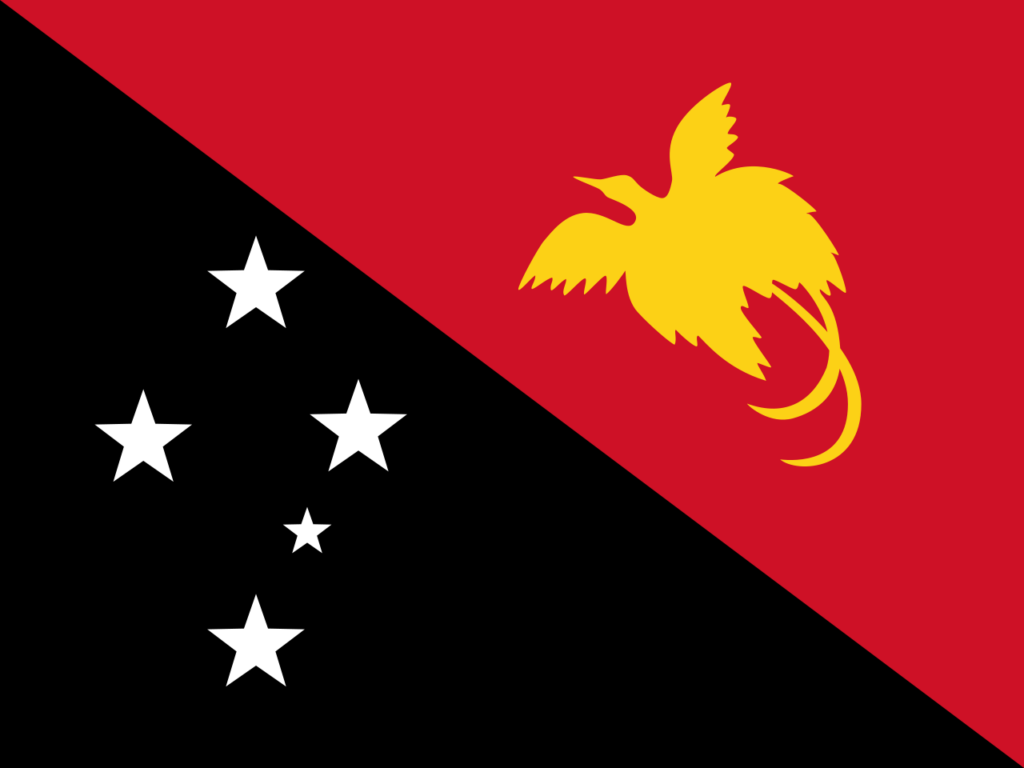
Like Kiribati’s, the flag of Papua New Guinea features a bird symbol – in this case, the Raggiana bird-of-paradise. Both flags use bird imagery to symbolize freedom and national identity.
Additionally, both flags incorporate traditional symbols, reflecting the rich cultural heritage of each nation.
Malaysia
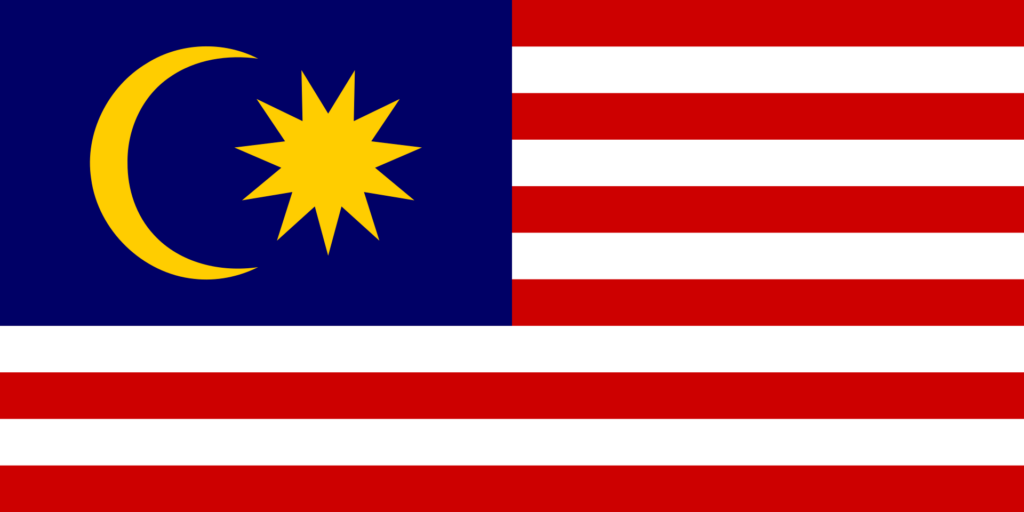
Malaysia’s flag also features stripes and a celestial object, albeit in a different arrangement. The similarities lie in the use of stripes (horizontal in Kiribati, vertical in Malaysia) and a symbolic representation of celestial elements (the sun in Kiribati and the moon in Malaysia), signifying a connection to nature and the cosmos.
Marshall Islands
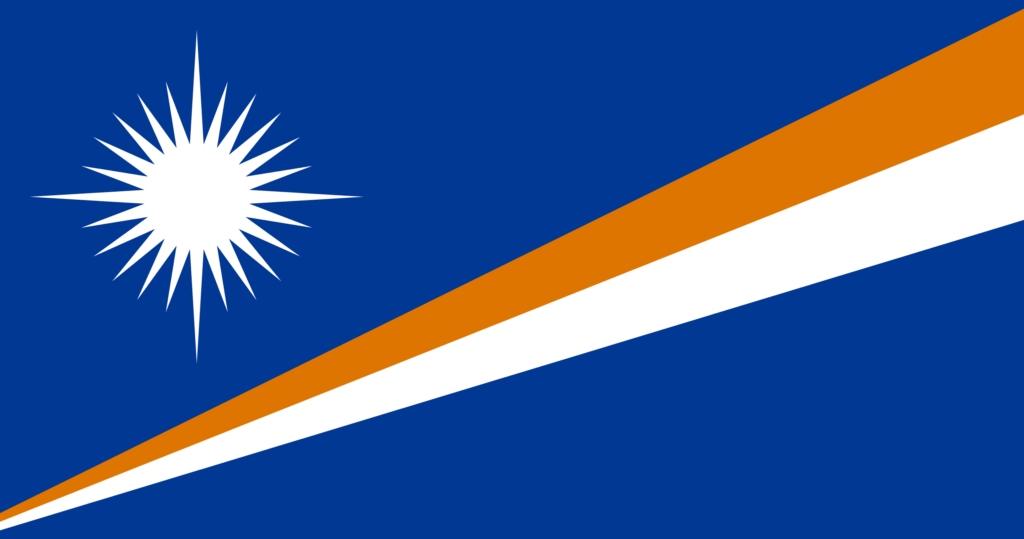
The Marshall Islands flag shares a similar color palette and oceanic theme with Kiribati’s flag. Both flags use blue to represent their geographic setting in the Pacific Ocean and feature a symbolic representation of the sun, highlighting their equatorial location.
Final Thoughts
The flag of Kiribati stands as a vibrant emblem of the nation’s heritage and aspirations, encapsulating its unique identity within the global tapestry of flags. It holds profound significance for Kiribati’s citizens, symbolizing their unity, resilience, and deep connection to their natural and cultural environment.
Image Sources and Copyright Information
- Kiribati Flag Against a Sky Background: © Kahunapule Michael Johnson/Flickr